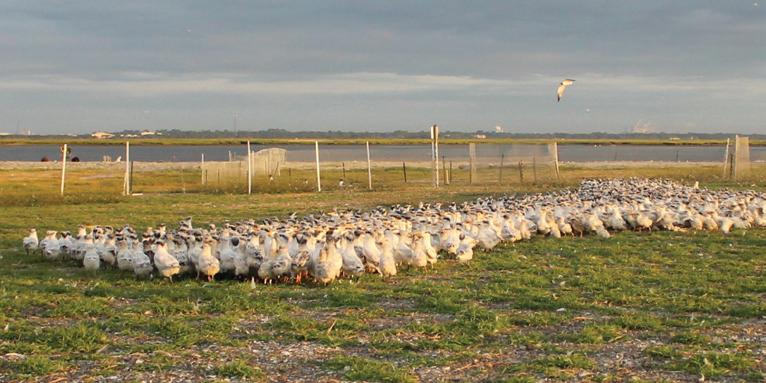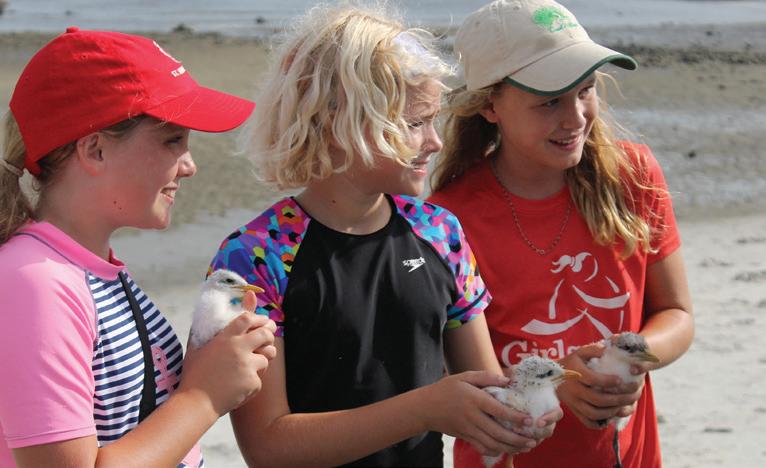
1 minute read
A Tern Rodeo
How do you band 2,000 tern chicks in two days?
With a good plan, plenty of help and a healthy appreciation for the purpose behind the chaos.
Advertisement
On two mornings in July, GADNR and Virginia Tech staff and volunteers herded mobs of squawking, stumbling royal and sandwich tern chicks into temporary corrals on the Brunswick dredge island as anxious tern parents wheeled and trilled overhead.
Weeks later, most of the chicks are flying and many have been spotted, ID’d by their new plastic leg bands, DNR wildlife biologist Tim Keyes said.
“We are getting band re-sights from those chicks all up and down the coast, from Tybee, Sapelo, the Altamaha delta, Cumberland, northeast Florida. It’s pretty cool.”


It’s also what project leaders hoped for. The banding is part of a Virginia Tech study focused on Virginia’s largest colony for colonial seabirds, a man-made island in Chesapeake Bay where as many as 20,000 royal terns and other birds nest. A $3.8 billion expansion of the Hampton Roads Bridge-Tunnel to ease traffic congestion will remove nesting habitat on the island.
Scientists documenting how seabirds use the site want to see where the displaced terns wind up. The Brunswick dredge island, between St. Simons and Jekyll islands, is protected habitat that will serve as something of a control area.



Keyes said the study also will provide data to better estimate how many terns nest on the island, how many young they produce and – by tracking the birds, from Maine to Peru how vital the colony is.
Considering the immediate results, so far, so good.
The young of crested terns including royal and sandwich terns leave the nest, or scrape, within a day after hatching, forming a large group of chicks called a creche (nursery).
One benefit of this behavior is that fewer adults can watch over more young, freeing other adults to forage for food even miles away.
Cued by sound and sight, parents apparently have no problem picking out their offspring in a sea of chicks.
DNR's Tim Keyes said that during the banding, when the chicks were in corrals, adults quickly found and fed their young.
To report a sighting, email the band code, time and place to vt.plover@gmail.com. Good photos are welcomed. At the Brunswick dredge island, 1,500 royal tern chicks received plastic bands. About another 500 royal and sandwich tern chicks received metal leg bands (which are less easy to read in the field).


This









